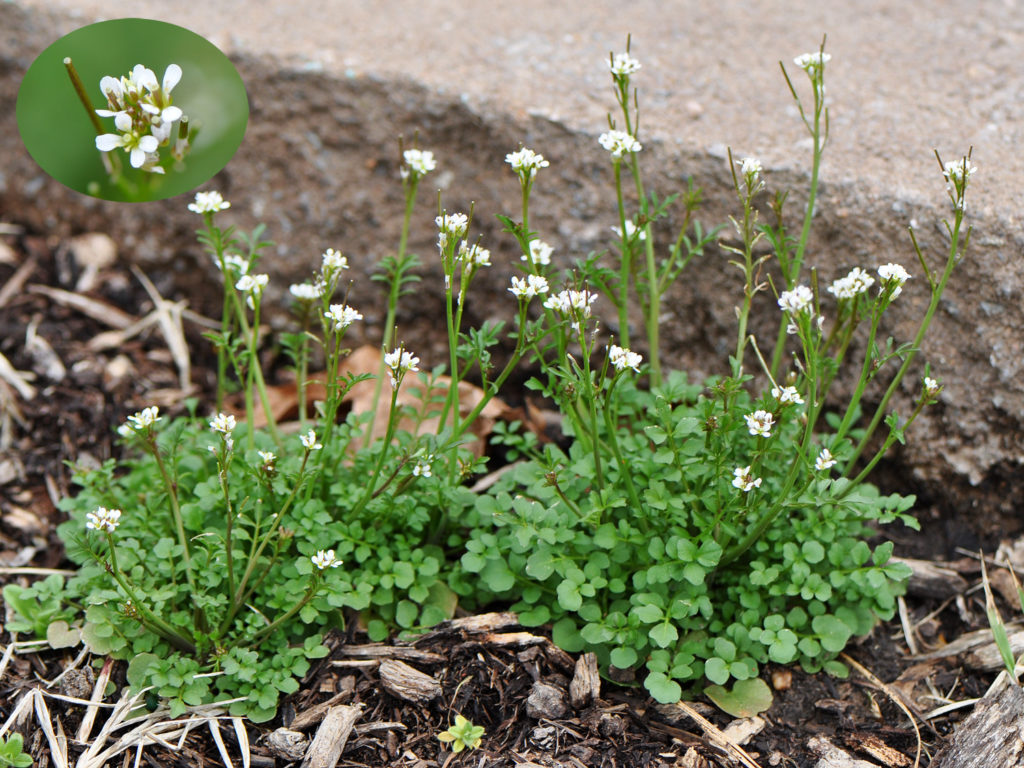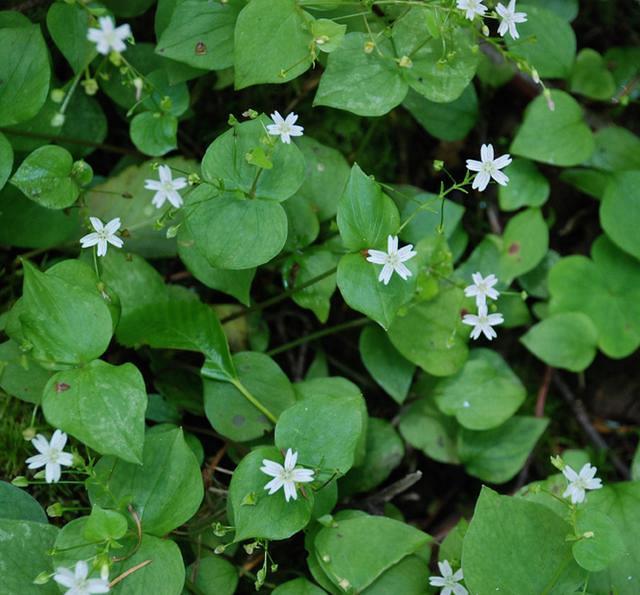Introduced species: Hairy bittercress (Cardamine hirsuta)
Description:
This month’s weed is less of a threat to natural areas than many featured weeds–though it does show up there–but is one that is very common in urban yards, to the great chagrin of gardeners. Hairy bittercress is a short (usually < 15 cm, or 6″) annual (or occasional biennial) in the mustard family (Brassicaceae), that seems to show up in great abundance out of nowhere very early in the growing season. It has a rosette of pinnate leaves–each containing 8-15 leaflets–2.5 – 15 cm (1-6″) long, with one or several flower stalks arising from the center (these may also have short leaves on them). Small (1.5-4.5 mm, or roughly 1/8″), white flowers are borne at the ends of these, which give way to elongated (up to 2.5 cm, or 1″), explosive seed pods (siliques).
Spread:
Like most annuals, hairy bittercress reproduces exclusively by seed. When ripe, the seed pods explode on even minimal contact, dispersing the seeds (this dispersal method is called “ballochory.” There’s a word for everything in botany!).
Control:
Hairy bittercress has very shallow roots, and is readily hand-pulled. It is difficult to fully control once established, since its prolific seeding and small size make it easy to miss a few plants (which will then re-seed profusely). Sharp eyes are your best tool for controlling this plant!
Native replacement:
Siberian miner’s lettuce (Claytonia sibirica) is a native perennial with pink-striped, five-petaled white flowers that self-seeds readily (but much less explosively than bittercress), which will do well in moist soils and shady areas.


